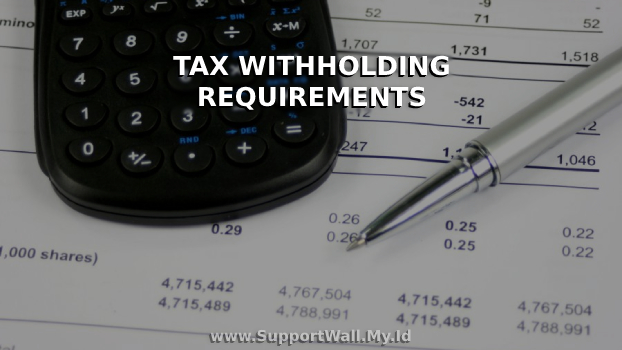Tax withholding requirements are a crucial part of the tax system in the United States. They involve the deduction of a certain amount of money from an employee’s paycheck. Remitting it to the Internal Revenue Service (IRS).
The purpose of tax withholding is to ensure that taxpayers pay their taxes. Through out the year rather than waiting until the end of the year to settle their tax obligations.
This article presents an outline of tax withholding requirements. Consisting of who’s liable for withholding taxes, a way to calculate tax withholding. And what takes place in case you fail to conform with those requirements.
Definition of Tax Withholding
Withholding is the process of taking a portion of an employee’s wages or salary and sending it to the IRS on behalf of the employee.
The amount deducted from an employee’s salary is based on income, application status. And the number of waivers requested on the W-4 form.
The predominant motive of withholding tax is to permit taxpayers to pay their taxes in the course of the yr instead of ready till the quit of the yr to settle their tax liability.
This device helps taxpayers keep away from being charged a big tax invoice on the quit of the yr and affords a constant flow of earnings for the government.
Tax withholding applies to loads of varieties of income, together with wages, salaries, tips, and different compensation. In addition, taxes can also be withheld from different reassets of income, inclusive of pensions, bonuses, and playing winnings.
It is important to note that not all types of income are subject to withholding tax. For example, investment income such as dividends and capital gains are tax-free. Instead, taxpayers must pay estimated taxes on this type of income.
Who is Responsible for Tax Withholding?
Your employer is the primary party responsible for withholding tax. It is the employer’s responsibility to withhold taxes from an employee’s paycheck and remit it to the IRS.
Employers are required to withhold taxes from their employees’ wages, salaries, bonuses, tips and other remuneration. The employer is also responsible for filing payroll tax returns with her IRS.
Also Read: Small Business Accounting And Payroll: Essential Practices
The self-employed are also liable for tax deductions. Unlike employers, who withhold taxes from their employees’ paychecks. The self-employed must pay estimated tax payments throughout the year Estimated taxes are made quarterly and are calculated based on your estimated income for the year.
Taxpayers who work multiple jobs are also responsible for withholding tax. If a taxpayer works multiple jobs.
They may need to adjust their withholding tax to avoid underpayment penalties. Underpayment penalties occur when a taxpayer fails to pay enough tax throughout the year and owes a large amount of tax at the end of the year.
How to Calculate Tax Withholding?
The first step in calculating the tax credit is to determine the employee’s enrollment status. Your registration status determines the tax rate applicable to your employee’s income.
There are five application statuses: Single, Married, Joint Application, Married, Individual Application, Head of Household, and Widow with Dependents.
The next step in calculating tax credits is determining employee benefits. Allowances are used to tailor the amount of tax withheld from an employee’s wages to suit their individual circumstances.
The more benefits an employee claims, the less tax is deducted from their wages.
The third step in calculating the tax credit is to determine the employee’s taxable income Taxable income is the amount of income that is subject to federal income tax.
Also Read: Understanding the Basics of Federal Income Tax
To calculate your taxable income, subtract input tax credits such as: 401(k) contributions or health insurance premiums, from the employee’s gross salary.
The very last step in calculating tax withholding is to apply the IRS tax tables. The tax tables offer the quantity of taxes to be withheld primarily based totally at the employee’s submitting status, allowances, and taxable income.
Conclusion
In summary, withholding requirements are an important aspect of the US tax system. Employers, the self-employed, and multiple-job taxpayers all have responsibilities related to withholding.
Understanding how tax withholding requirements, their purpose, and the types of income that are deductible are essential to ensuring tax compliance and avoiding penalties and legal consequences.
